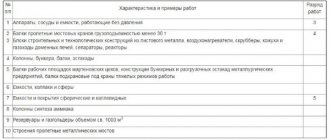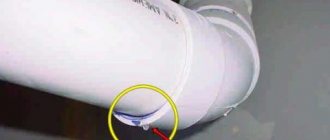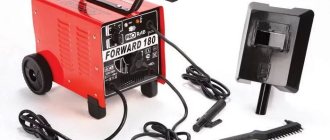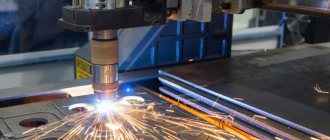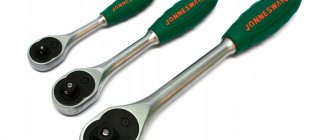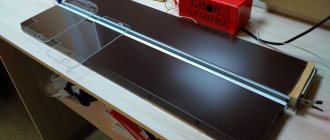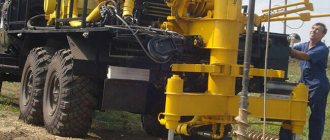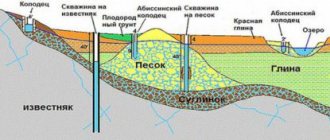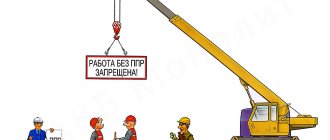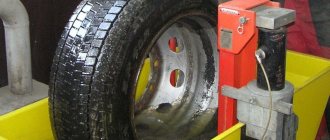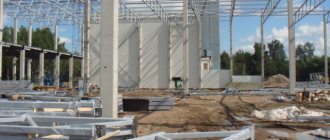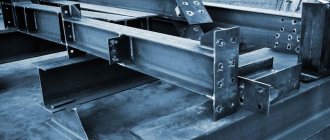Depending on the method of operation, finished metal products can be transformed, disassembled or have a stationary structure. The methods used for manufacturing metal structures depend on the characteristics of the facility where they will be used. For example, lightweight metal structures are usually used for prefabricated structures; the frame of almost any type of building consists of reinforced rolled metal. In the production of flights of stairs, road signs, fences and other oversized structures, rolled products classified as small metal structures are used.
Features of cutting metal structures
Cutting is of the following type:
- Laser. The most effective, but also expensive method of metal processing, which allows you to achieve impeccable edge quality in the shortest possible time, especially if cutting is carried out in nitrogen. Modern laser equipment for cutting rolled metal products is characterized by high productivity and cutting accuracy. The most popular fiber laser devices due to their affordable cost.
- Gas plasma. The technique is low cost. Due to the low quality of the edge, it is used in blank production.
- Waterjet cutting. A universal technique, suitable for processing dissimilar materials.
Features of manufacturing metal structures
Since the safety and lives of people depend on the quality and stability of metal structures, their creation begins with the development of a project, which undergoes mandatory approval by government supervisory authorities. After this, the direct production of individual structural parts, their assembly and protection against corrosion (rust) begins, and at each stage the quality of the product is strictly controlled. After manufacturing all the necessary parts, they are handed over to the customer or transported to his site for installation work.
Technological processes for the production of metal structures
The manufacture of metal structures of any complexity necessarily involves high-quality performance of the following types of work:
- preparation of rolled metal (sorting, culling, cleaning of contaminants),
- markings,
- mechanical processing (cutting, chopping, bending workpieces, drilling holes, etc.),
- welding work,
- finishing (grinding, deburring, edge processing, etc.),
- primer and painting,
- assembly and shipment of finished structural parts.
Each production stage and processing process requires compliance with permissible deviations from the nominal dimensions and characteristics of parts specified in the project and regulatory documentation. To improve quality, modern machines and equipment are used, including automated and high-precision systems.
Features of welding metal structures
Welding involves heating two parts until the metal partially melts along the joint lines.
The most common are:
- electric arc;
- gas (using a gas burner);
- spot welding.
Electric arc welding uses a consumable electrode to create the joint. Gas (including the use of inert gas) allows you to melt individual parts of the metal until a homogeneous structure is formed, and then connect them. In the process of spot welding, metal sheets are pressed against each other and an electric discharge is passed at the points of compression.
Metal welding can be done manually, semi-automatically or automatically. Enterprises with large production facilities often have a separate workshop for automatic welding.
Production of metal structures - modern technologies
Literally 5-10 years ago, the process of automatic assembly of metal structures was not considered even in theory, citing the low quality of semi-finished products and the lack of technology for positioning workpieces and the small-scale nature of the operation. However, a new round of progress has eliminated all obstacles, and the technology of automatic assembly of metal structures has gained its right to life.
Moreover, lines for the automatic assembly of rolled metal structures were produced by several machine-tool companies at once, forming a new branch of the metal processing market in just two or three years.
Well, the “freshest” line of automatic assembly of metal structures is a unit from the Voortman company, which received a name that sounds euphonious to Russian ears - Fabricator. And in this article we will look at this particular assembly line.
What are the benefits of Fabricator?
Firstly, this line operates automatically. That is, without the presence of an operator. Therefore, Voortman Fabricator saves both money (by reducing staff) and time (by increasing the speed of work).
Secondly, the Voortman line operates in a continuous production process. That is, at the “Fabricator” you can assemble both handicraft and large-scale batches of metal structures.
Thirdly, assembly quality control is built into the production line of rolled metal structures itself. Therefore, when leaving the Voortman Fabricator, the customer receives only ideal products assembled for welding.
Fourthly, the supply of material (semi-finished products, blanks) on the Voortman Fabricator line is carried out only in automatic mode, which will speed up the assembly process and eliminate errors in the positioning of blanks.
Fifthly, the assembly and welding of workpieces is carried out in all planes (360 degree coverage), which makes it possible to assemble structures of the most complex shapes.
Sixthly, tacking and welding are carried out in the format of a single pass of the workpiece along the Voortman Fabricator line. As a result, assembly time is saved by eliminating the process of primary assembly with tack welding of components.
Seventh, cutting and subsequent disposal of “extra” sections is carried out automatically, within the specified dimensions of the assembled structure.
As a result, it can be argued that the Voortman Fabricator is not just another assembly line, but a real benchmark for automated metal production systems, setting new benchmarks in the promising segment of the metalworking market.
Voortman Fabricator Specifications
Using the Fabricator assembly line, you can install metal structures with dimensions of 6x4.1 meters.
Thanks to the continuous production cycle, the length of metal structures assembled using the Voortman Fabricator ranges from 1 to 24 meters.
The length of the Fabricator’s working (assembly) zone is a multiple of 12, 18 and 24 meters.
The weight of a linear meter of a structure assembled using a Voortman Fabricator cannot exceed 300 kg. That is, the maximum weight of a metal structure formed at Fabrikator is 7200 kilograms.
The feed speed of the workpiece along the Voortman Fabricator line can reach up to 40 m/minute, and the speed of movement of the automatic welding machine that forms the butt seams reaches up to 90 m/min. Moreover, such a machine uses a special wire as a filler material.
Moreover, the hydraulics of the Voortman Fabricator line are capable of generating pressure up to 200 bar. Therefore, this system can operate with the heaviest and largest parts.
Material and technical base
Regardless of the type of product manufactured, finished parts must undergo strict control at all stages of production. Large industrial organizations have several workshops that specialize in performing certain processes.
Depending on the area of activity, an organization may have the following workshops:
- Milling. In this workshop, metal is cut according to the designed sketch. Key operations related to the production of metal structure parts are also concentrated here (marking, cutting, planing, creating holes, milling ends, etc.).
- Turning. Fasteners and other elements are produced here.
- Press and molding. The workshop is designed to transform the planar parameters of rolled metal products in accordance with specifications or drawings.
- Assembly. The workshop assembles individual parts into a finished metal structure using welding, gluing, riveting or fixing with nuts and bolts. When assembling components and grades, mounting holes are drilled, parts are milled and control assembly is carried out.
- Painting. Here sandblasting of finished products takes place, priming with corrosion-preventing agents, and subsequent powder painting.
Main types of metal structures
Metal structures are widely used as a load-bearing frame and supporting elements of almost any structure due to the strength of the metal, its availability and the development of metalworking technologies.
On their basis, residential and administrative buildings, warehouses, industrial buildings and hangars, agricultural facilities, bridges, various mechanisms, utilities and other infrastructure elements are erected.
Therefore, the manufacture of any metal structures is a responsible task, the correct solution of which determines not only the performance and durability of structures and mechanisms, but also the lives of people. Depending on the selected criterion, different types of metal structures can be distinguished.
For example, according to purpose they distinguish:
- load-bearing metal structures that ensure the preservation of the shape of the structure, the rigidity of its frame, the strength and functionality of its support systems,
- enclosing metal structures - parts that perform the function of protecting an object and the people in it from external influences, violations of normal operating conditions and safety.
According to the method of using frame parts, we can distinguish:
- prefabricated metal structures that can be reused,
- solid cast – structures of objects of long-term and constant operation that are not subject to dismantling,
- transformable - sets of standard elements that allow you to assemble structures of various shapes and sizes from them and, if necessary, disassemble them.
The method of joining parts and the method of their manufacture determine the differences between the following types of metal structures:
- bolted (or screw) – assembled using dismountable fasteners (hardware),
- riveted – connected using permanent elements (rivets),
- welded - fastened together by welding,
- forged - manufactured and joined by forging,
- stamped - seamless products made by stamping rolled metal,
- combined - combined using various types of connections.
The most reliable are riveted, bolted and welded methods of connecting elements, but the purpose of the structure and its operating conditions determine the choice of connection method, since, for example, screw connections (generally providing high reliability and strength) are not stable in structures exposed to vibration.
Metal structures can be divided according to the type of material used in them (for example, steel, cast iron, titanium, aluminum, etc.), but structures made of unalloyed carbon steel are characterized by the greatest versatility.
